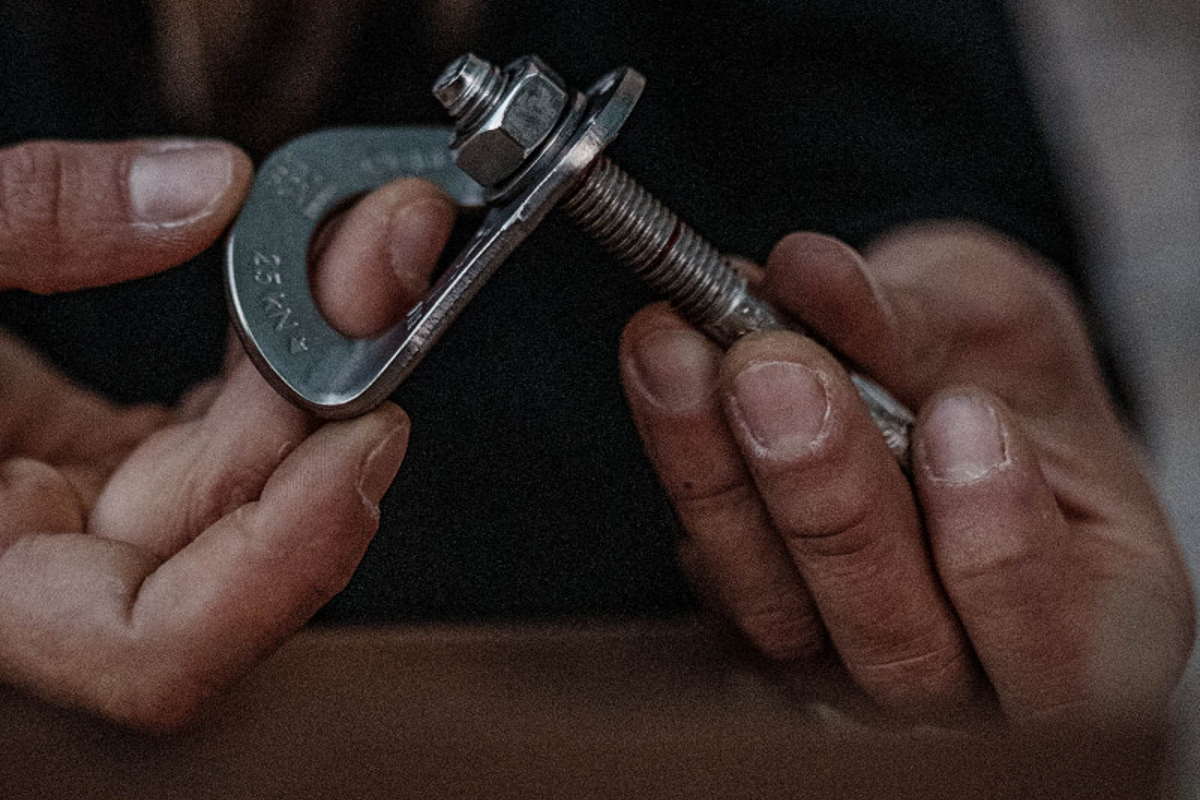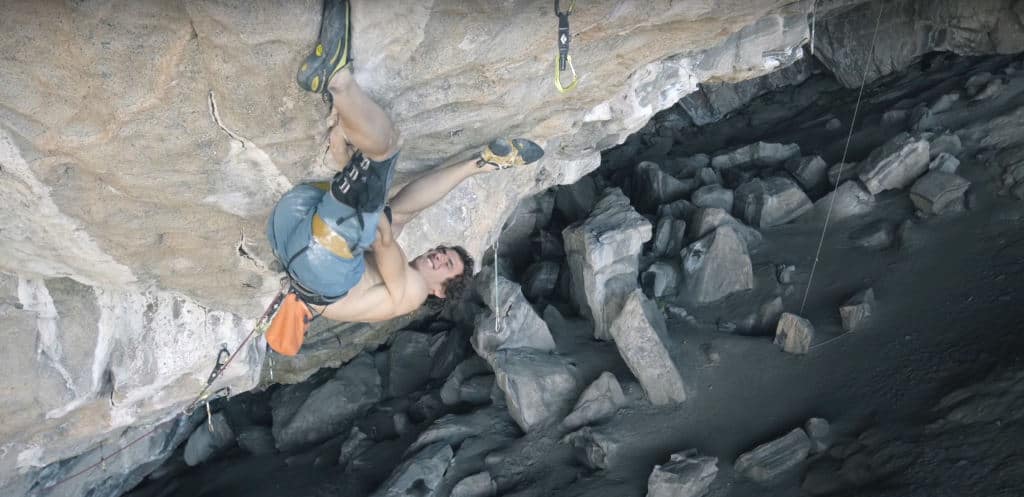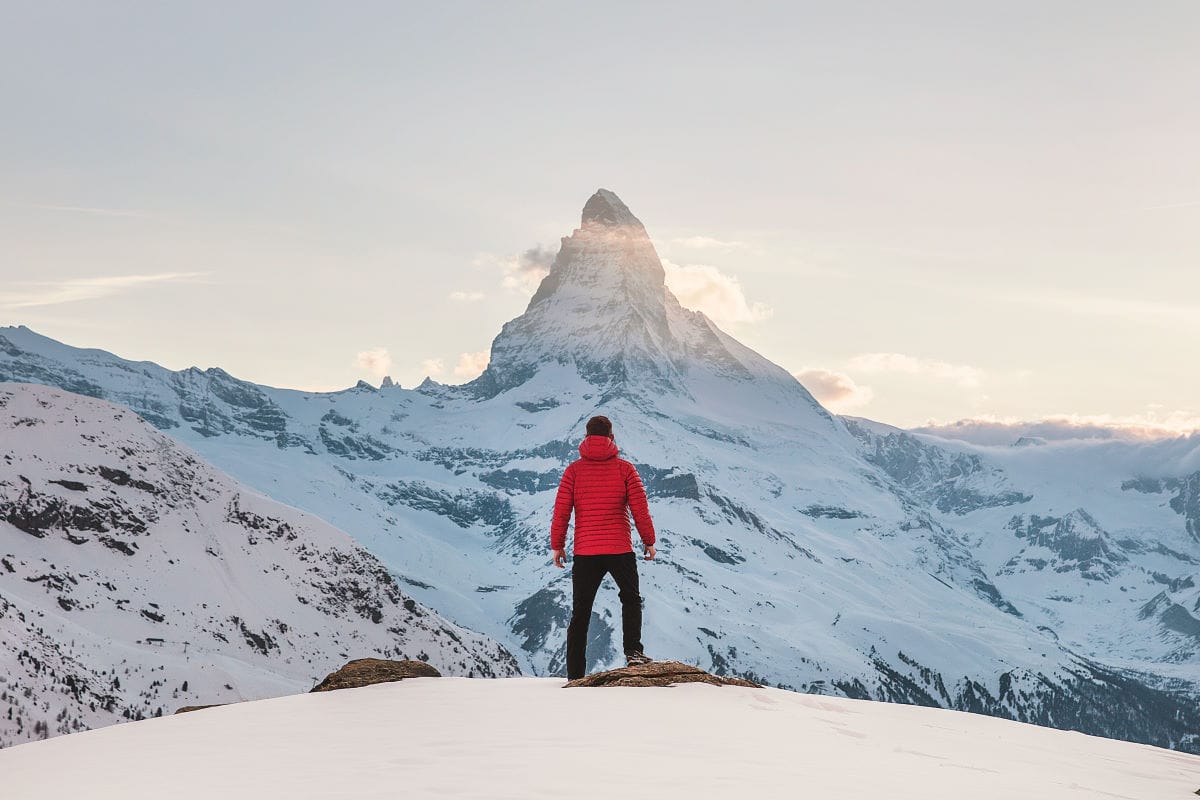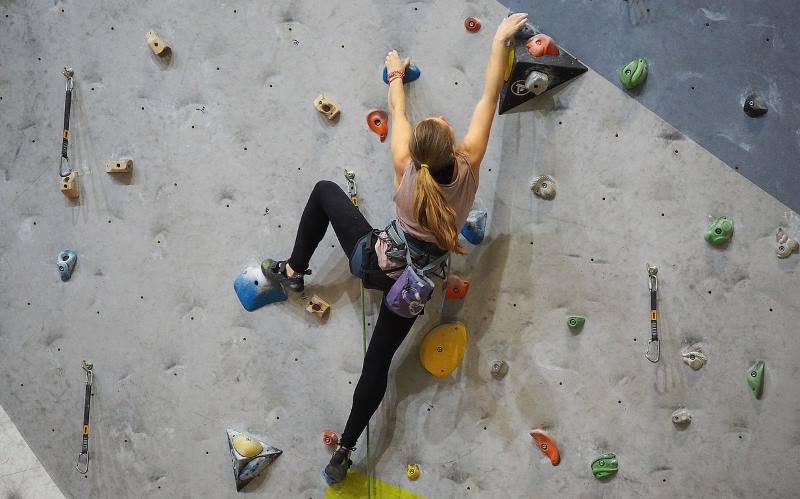Bouldering is fast becoming the next big thing. As a sport, it combines physical strength with technical skill and requires a lot of problem-solving. Find out more about bouldering along with our tips on giving it a go.
What Is Bouldering?
Bouldering is rock climbing close to the ground without the need for a rope or harness. It can be done indoors or out and all you need is a pair of climbing shoes, some chalk, and a big foam crash pad. Literally climbing on a boulder instead of on a rock face or cliff.
It started pretty organically when climbers tired of waiting for a partner wanted to practice their skills. As it’s so easy to get a bunch of climbing in without much gear it’s become very popular for climbers and newbies alike.
Nowadays bouldering is essentially its own sport, with many dedicated boulderers who rarely touch a rope. Indoor bouldering gyms have brought it to the masses and the sport is rapidly becoming the next big fitness craze.
Is Bouldering Rock Climbing?
Yes, bouldering is a form of rock climbing. It boils it down to just the physical side of things without the need for much gear. All the movements, hold types, and most of the slang is exactly the same.
Modern bouldering has pushed the limits of climbing as a whole by allowing a new way of practicing incredibly hard moves. Being able to repeat very hard sequences over and over makes a big difference in how skill levels are progressing.
Whereas climbers used to focus on rope and gear skills – modern climbers tend to have bouldering as their core practice. That allows more time on the wall working on a strong grip, powerful core, and precise technique. Some use it as training for bigger walls and some focus entirely on bouldering.
How Tall Are Bouldering Walls?
On average bouldering walls are around 4 meters or 13 feet high. Some go to 4.5 meters or 15 feet, which is the legal limit for most countries. Indoor Bouldering padding is usually pretty thick at 30 centimeters or about 12 inches thick whereas outdoor bouldering mats vary.
How To Start Bouldering?
The best way to start bouldering is simply to book an introduction at a local bouldering or climbing gym. There you’ll be shown the basics of how to boulder safely, given an overview of the gym and its features, with a little basic technique to get you started.
From there you can come back and climb whenever you’d like. Bouldering is a great way of getting regular exercise while also doing a bit of socializing. You can work up a sweat but be mentally engaged, enjoy the challenge, plus have a chat with others whilst you’re at it.
Read our full guide on How To Start Rock Climbing today!
What Do I Need To Go Bouldering
Indoors you can hire all the gear you need. With a pair of climbing shoes and a chalk bag – nowadays a bottle of liquid chalk – you are good to go. These are normally included in the price of your first introduction session.
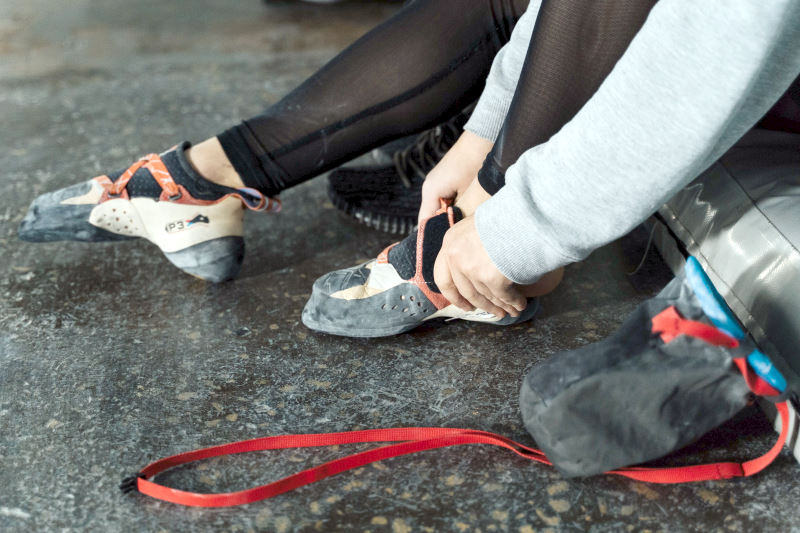
After a month or two think about buying your first pair of beginner climbing shoes. You might also want to pick up a brush for cleaning holds of debris and then cleaning chalk off. Outdoors you’ll need a crash pad, a chalk bag or bucket, and a guidebook for the local area.
– What To Wear Indoor Bouldering
– Best Beginner Bouldering Crash Pads
– Best Bouldering Crash Pad
How To Boulder Indoors?
The literal how to actually boulder goes like this: –
- Start on the lowest hand and foot holds – sometimes marked with tape, a colored bolt, or a grade
- Start with your feet off of the floor, without jumping to start (and skip a move)
- Use holds of just one color (or one color of tape), as well as the walls or corners
- You don’t need to use every hold and you can use them with your hands or feet.
- Climb to the top and touch both hands on the last hold – sometimes the top of the wall if marked
- Climb down using any color hold, just get down safe
- If you need to jump or fall – bend your knees, hands up in front of you, and watch your head
- Don’t jump away from the wall, spin, or put your hands behind you when coming off
That’s the basic rundown but it’s well worth taking a short introduction so you can practice with an instructor. Falling off safely is the biggest thing to learn and takes some time. Practice low falls and don’t be afraid to roll onto your butt and back when landing to absorb some of the falling force.
Bouldering At The Olympics
Bouldering is in the Olympics for the first time ever – as part of the Sport Climbing event in Tokyo in 2021. Lead Climbing, Bouldering, and Speed Climbing are the three categories, with climbers needing to place well in all three for a medal.
Olympic Bouldering Rules
In the Bouldering stage, there are four boulders (sometimes called routes, blocs, or problems) each for the Men’s and Women’s categories. The competitors get four minutes per attempt with full points if they reach the top or fewer points for reaching the mid-way hold called a “zone”.
The winner of the event is the person with the most “tops”. If there is a tie then the most zones are used. If that is the same then the climber with the least amount of attempts wins. This leads to tactical thinking where climbers might decide it would be better to stop trying one boulder and save energy for the next.
Bear in mind that winning just one event doesn’t give a medal. Competitors must place high in all three categories for a medal chance. Your placing in each is multiplied together, with the lowest overall score winning. For example, a climber with 1st in Lead, 2nd in Speed, and 4th in Bouldering would get 8 points (1 x 2 x 4 = 8).
Olympic Bouldering Wall Height
The Olympic Bouldering wall in Tokyo is 4 meters or 13 feet high. It has lots of interesting angles that are mainly overhung, an inwards-facing corner, and a huge pointed prow jutting out to the right.
Find Out More
– What Is Lead Climbing?
– What Is Speed Climbing?
– What Is Sport Climbing?
Who Will Win Bouldering At The Olympics?
The pick for the winner of Bouldering is very hard as there is so much competition for the event. Janja Garnbret of Slovenia is the top pick based on her results in the past few years where she’s been dominant. It’s almost certain she’ll place in the top 3 if she doesn’t walk away with Gold.
However, Akiyo Noguchi is a veteran from the Japanese team who has the most Bouldering World Cup and Championships medals by far. The Olympics is planned to be her last pro event before retiring and it would be incredible if she went out with the Gold.
Shauna Coxsey of Great Britain and Miho Nonaka are incredible boulderers and competitors and could well take the first place. Brooke Raboutou of the USA is also getting stronger by the day and her recent placements have her at the top consistently.
For the Men, it’s also very tight. From the Czech Republic, Adam Ondra is probably the best climber in the world. Though he’s known mostly for his outdoor Sport Climbing sends, he’s also world-class at indoor Bouldering competitions.
Tomoa Narasaki of Japan is poised to take maybe both the Bouldering and Lead Climbing top placings as well as Gold overall. He has withdrawn a little from competing lately but that’s because he is non-stop training for the Olympics.
Jan Hojer from Germany is another consistent top-level competitor, as is Jakob Schubert of Austria. For the USA, Nathaniel Coleman has been performing well in recent US competitions.
Is Bouldering Dangerous?
Bouldering does come with a danger of injury – though indoors it’s fairly safe. Serious injury isn’t common but spraining an ankle or wrist are familiar injuries to long-term boulderers. Bruises, cuts, and scraps come with the territory. The main danger is from awkward falls.
Indoors the mat helps to prevent injury but doesn’t prevent it. Learning to fall properly and becoming confident in falling from different positions will greatly reduce the chance of injury. Climbing gyms overall are safer environments and have first aid trained staff.
Outdoors be vigilant of hazards like rocks or sharp tree roots on the fall. Make sure bouldering mats cover these or use multiple pads and covers to reduce gaps. Spotters (friends) help move the pads when needed and try to stop your head from hitting the floor in bad falls.
When bouldering outdoors you should be aware of what would happen in a serious injury – like a broken leg. Make sure people know where you are going and when to expect you back. Plan a route out, have a way of contacting emergency services with a correct location, and take enough water and a small emergency first aid kit.
Is Bouldering Hard?
We wouldn’t say that bouldering is hard, more that it is challenging. There are enough bouldering gyms and boulders outdoors that you can be challenged at any level. The great thing is that progression comes fast and bouldering is really fun. You don’t need loads of upper body strength or abs to start!
It’s engaging and makes you think about what you’re doing and what little things to improve. You can get a workout without feeling like you’re on a treadmill at the gym, and you can start with absolutely no upper body strength and no technique. You can also just go to have fun and chill out with friends.
Give bouldering a go and we’re sure you’ll enjoy it!
Can Anyone Boulder?
Yes! Bouldering gyms especially are really inclusive. Please try it and don’t be put off by what you think people might expect a climber to look or act like. If you are at all worried here is a big list of social and support groups that might help spur you on or help you start.
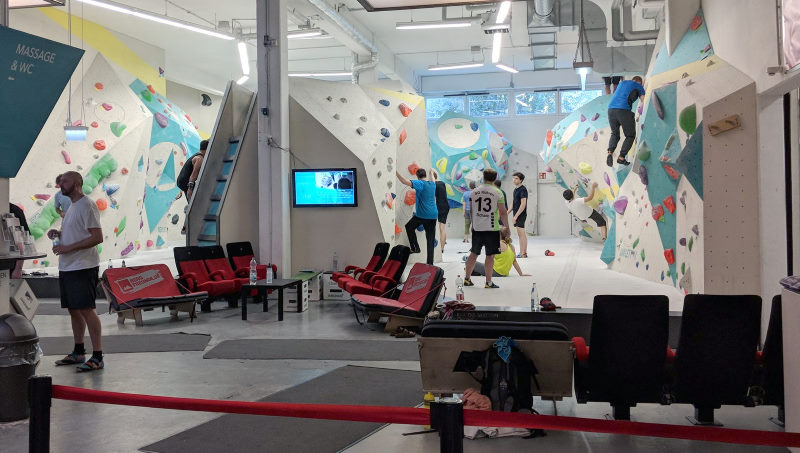
If you’re worried about not having the strength you should know bouldering and rock climbing are much more about technique than sheer muscle power. If you are worried about weight check out Drew Climbs for a big guy who boulders loads indoors and out.
If you have a disability or are missing a limb you can definitely still go bouldering. Some might find that roped rock climbing might suit them better than bouldering. Paraclimbing is a thing as well as adaptive climbing and climbing without sight.
Bouldering Grades
What is bouldering grading and why is it so complicated? Bouldering grades can be a little confusing so most gyms just go by hold color. Look for a color chart that shows what colors to climb from easiest to hardest. Don’t be put off and do try anything that looks doable.
Commonly you’ll see V grades used in gyms. Starting at VB (for Basic) as the lowest grade, followed by V0, V1, V2, and higher, going up in difficulty. The V stands for “Vermin” or “Verm” after John Sherman’s nickname. He pushed forward modern bouldering’s popularity and set a new standard for grading routes.
Other gyms use the French “Font” system. This is used in Fontainebleau, a huge forested area just outside of Paris that has literally thousands of boulders and is the historic center of the bouldering world. These grades are similar but are graded like F3, F3+, F4 e.t.c. Basically the higher the number, or letter – the harder the grade. A plus means the grade is also harder.
Some gyms grade each colored route with a tag or note at the bottom. Some mix hold colors and use colored tape to mark routes. If you see tape at the bottom on maybe two or four holds, that means which are the starting holds you must use. The same goes for the top and the finish holds.
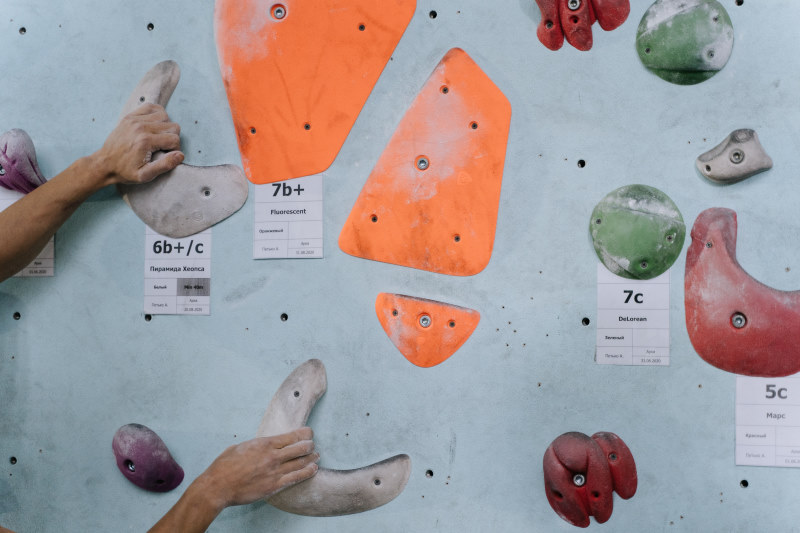
Gyms often use colors to denote the grade range. You might find one color has 2 or 3 different V grades in it. That allows you to pick a color and see how many routes of around that grade you can do. Bouldering route difficulty is very subjective so you might find you can do some routes of a certain grade easily and struggle on others.
You can also find circuits that are either a similar grade or a particular style. Sometimes you’ll see “comp” grades, which is a circuit of routes set for a specific competition or just in a competition style. Modern style setting and competitions often emphasize dynamic movement, jumping, and coordination moves, also known as the parkour style.
Why Is Bouldering So Popular?
Bouldering gyms are more popular than ever before. It’s pretty common to have a handful of options in most cities with more opening than ever before. The mix of a workout and a social session has appeal to people looking for a new activity that’s somewhere in between going to a bar and going to the gym.
It’s healthy, challenging, fun, engaging, and social. Modern bouldering gyms are thoughtfully designed with lots of space, a variety of problems and holds to try, and normally have a great café. The opportunity to continue your rock climbing journey and meet other like-minded people is also a big bonus.
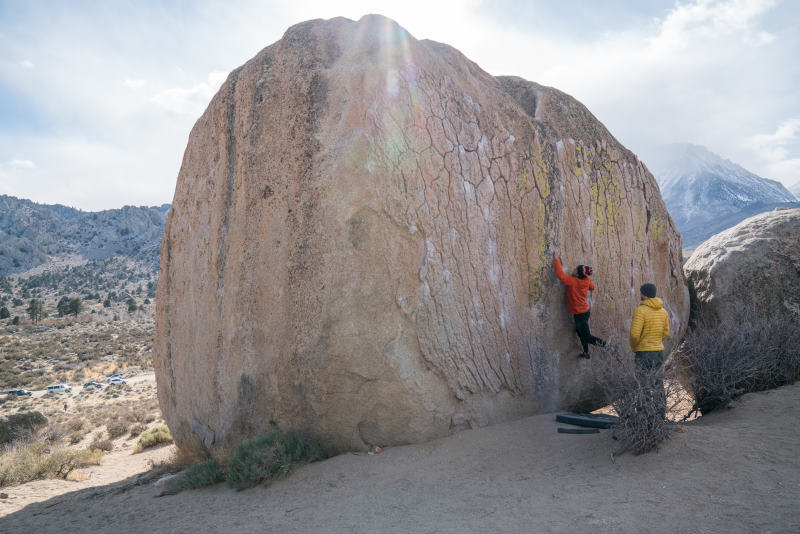
Can You Go Bouldering Alone?
Yes, bouldering can be done alone safely. A big draw to bouldering indoors is that you can just rock up and climb without needing someone on the ropes. It’s really common to train by yourself and chat with the regulars, plus it’s handy if you just want to focus on that session.
Outdoors it’s worth going with someone to help “spot” you by moving mats around and in case of injury.
How Do I Get Better At Bouldering?
For the first few months, you get better at bouldering by just bouldering. You’ll learn organically and your body will adapt and grow to help you stay on the wall. Learning basic technique will then go a long way. Getting a book like “Rock Climbing Technique” is great but for now, these tips will help: –
- Keep your arms straight and body low to save a lot of arm strength
- Only bend your arms when you are actively pulling up
- Put your toes onto footholds facing forwards – not the side of your foot. This helps when you need to move your foot and push up, and helps push your body forward and not out
- Keep close to the wall, hips especially as they are your center of balance
- Use your legs to push you up and focus less on pulling with your arms
- Plan ahead and look for holds you might have missed
Bouldering Health Benefits
Bouldering and rock climbing have many mental and physical health benefits. A bouldering session involves cardio and strength training The biggest benefit is that it’s engaging and fun instead of boring and repetitive.
Bouldering works your upper body and back for the pulling muscles. Grip strength improves pretty fast and you’ll be carrying shopping bags like a champ in no time. The core muscles are really important for keeping your body tense – meaning ab definition.
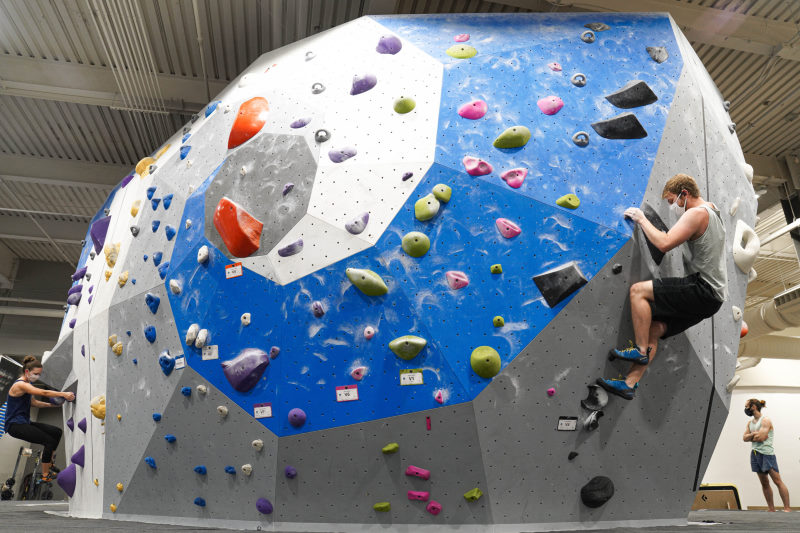
As well as the physical aspects, bouldering can be excellent for a mental health workout. It’s an engaging puzzle that will engage your brain’s problem-solving center. Combined with the natural fear of falling, it’s hard to think of anything but the task at hand.
For us it’s a form of physical meditation or practice in being present, meaning it’s great to take your mind off of the worries and stresses of life. Bouldering gyms also have a friendly, social vibe and it’s common to talk about solving a route in a group and make new friends.
Header image from Aleksandr Zykov on flickr.
